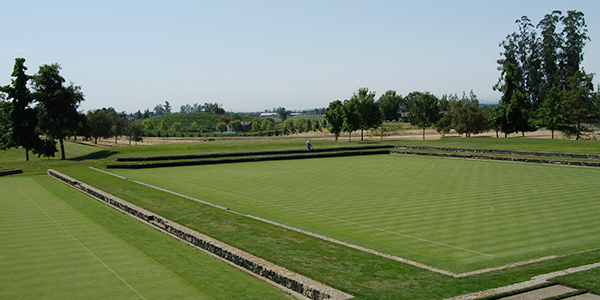Polo RULE
Polo is a game in which riders on horses use a stick called a mallet to score goals by hitting the ball into the goal. Polo is played with two teams of four. Players on
each team are numbered 1-4, with numbers 1 and 2 positioned at the front and numbers 3 and 4 positioned at the back. The player numbered 3 mainly plays a lead
ing role in team tactics. Each match consists of six 7-minute periods, called ‘chukkas’ (some countries play 4 or 8 chukkas). A three-minute break and a five-minute
halftime are between each chukker. The panel consists of two Umpires on horseback and one referee on the sidelines.


opposing team's goal. The defending side is permitted to defend their team's goal but may not threaten or catch an opposing team's piece or person with a mallet.
However, it is allowed to block the opponent's mallet to hit the ball with his own mallet if the player is within proximity to the opponent's horse.
on its severity. Major offenses include blocking the ball with anything other than a mallet, tapping the horse's behind, violating the rule of playing while looking at the
ball to one's right when running towards the ball, pushing the opponent's body, etc. When all chukkas are finished, the team with the most points wins. If both
teams are tied, overtime is played until either team scores 1 point.
A Polo stadium is usually 250 yards by 160 yards in size. A safety zone is set
around the stadium and a low board 28 cm high is installed. The goalpost, which
is 3 m high and 7.3 m wide, is located at the middle of each end of the stadium.
The players ride on small horses called Polo Ponies, which are about 15 to 15.2
hands tall (one hand is the length of the palm).
A horses’ forelimbs should be bandaged from below the knee to the ankle to pre
vent injury. Additionally, the mane should be pinned, and the tail should be braid
ed to avoid any tangling while the player is swinging the mallet.

riding and hockey, but the game is not that simple. As it was a gentleman's sport, strict rules are applied to the game.
It follows the rules of Hullingham, England, which had developed Polo into the worldwide sport it is today. Recently, however, there are many Polo clubs that are
beginning to apply international rules with different protocols.

